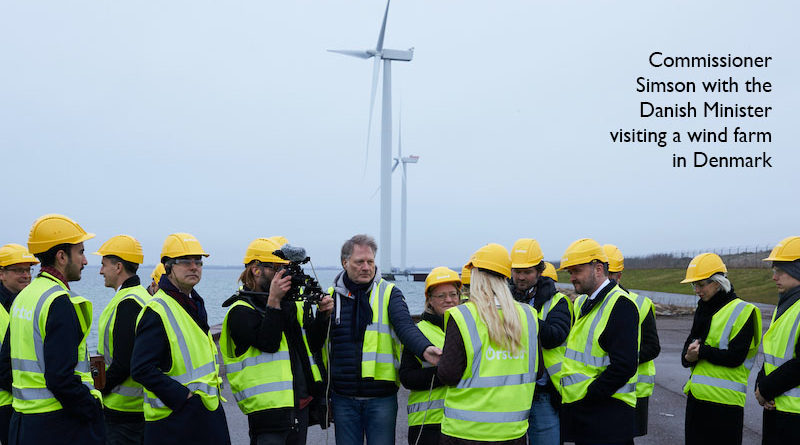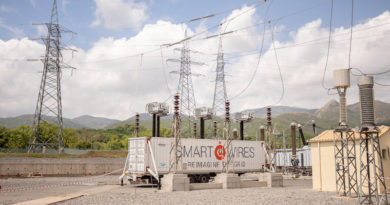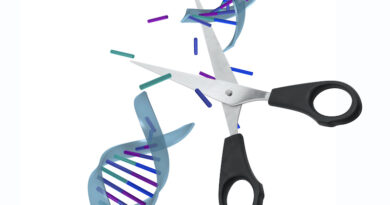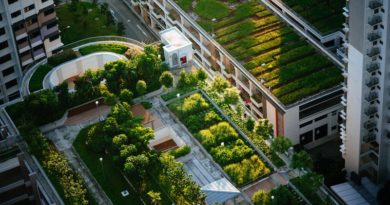
Creating the energy system of the future
The EU has made a political commitment to achieve carbon-neutrality by 2050, hence there is no doubt that Europe’s energy future will rely on an ever-growing volume of renewable energy. The share of renewable electricity sources keeps increasing, with one third of our electricity already coming from renewables. At the same time, the costs of renewables continue to come down – frequently being more competitive than their fossil fuel alternatives. In addition, innovation and technological progress means that renewable energies are diversifying beyond the “traditional” renewable electricity sources such as hydropower, wind and solar.
At the same time, the Commission is also preparing a new initiative to maximise the potential for offshore renewable energy sources, due for publication before the end of 2020.
Renewable gases, such as biogas and biomethane are already becoming more important elements in our energy mix.
New fuels, in particular renewable hydrogen, are also expected to develop rapidly in the coming years. But in order to encourage their further development and to enable us to make the most of their potential, all of these renewable energy sources need to be included and integrated into the energy system at all parts of the energy supply chain, from generation to end-use. They need access to a system that links the different energy carriers, infrastructures, and consumption sectors. A system that works in a coordinated manner.
This is one of the key challenges that the Commission is going to address through a major new initiative due for publication on the 8th of July, called the Strategy on Energy System Integration (ESI). In the coming years, the concept of Energy System Integration will guide us policymakers towards a wide- reaching reform of every aspect of the EU’s energy system, all in support of our ultimate goal of becoming climate neutral by 2050.
It is an integral part of the European Green Deal, and will result in a more efficient system that supports decarbonisation across multiple energy sources, building modern infrastructure, greening European industry, and allowing citizens to take decisions on the energy they use. A better-integrated energy system will not only help deliver our climate goals economically, but will also promote jobs and technological innovation. By making our economy more sustainable and resilient in the long term, the ESI strategy, like all other strands of our policy, constitutes another key building block of the EU’s economic recovery from the COVID-19 crisis.
One principle benefit from energy system integration will be to facilitate the contribution that renewables can make in the decarbonisation of sectors that are difficult to decarbonise, such as transport, buildings or industry.
For instance, renewable electricity for lightweight transport vehicles, biofuels for shipping, and hydrogen for some industrial processes. This process will not only link different energy carriers to end-use sectors, but it will also be done efficiently by attributing renewable energy sources where they are the most appropriate.
In this context, the versatility of renewable energy sources is expected to be an asset, making it easier to combine with innovative demand-side technologies and digitalisation. Indeed, this should enable a more efficient use of energy sources, while cutting primary energy demand. The potential for reducing consumption is huge, with the Commission’s 2018 Long-Term Strategy scenarios estimating that a more efficient use of energy sources would reduce energy demand by a third by 2050 , whilst supporting an increase in GDP of 75% .
Thus, by contributing to the decarbonisation of hard-to-abate sectors, energy system integration will facilitate the best combination of energy efficiency and conversion to renewables, thus reducing the environmental and climate impact of the energy sector while also supporting the economy.
Through the promotion of new and more efficient technology solutions across all sectors of industry, in particular in aiding the transition to renewables, the ESI strategy will also play a key role in strengthening the competitiveness of the European economy – and maintaining EU leadership in renewable technologies. A more flexible, better integrated system is expected to lead to the emergence of specialised enterprises that could provide energy services locally or regionally, creating more regional economic benefits. As new, more efficient, and complex technologies and processes are developed, they can rapidly be rolled out across the EU, and play an increasing role in energy systems worldwide.
In parallel with the Energy System Integration Strategy, the Commission is also intending to publish on July 8 a separate, Hydrogen Strategy to find ways of boosting this sector.
Another area where energy system integration can combine with renewables is the evolution and deployment of energy storage technologies. Given the variable nature of many renewables technologies, many people see storage as the missing part of the puzzle. Storage can take various forms depending on the type of primary renewable energy, such as thermal storage, pumped hydropower, grid- scale batteries, and electrolysers. It is possible others will emerge in the years ahead. The changes from the ESI strategy will make it easy for these technologies to be developed and to be integrated into the energy system.
In the end, renewable energy will not enable the decarbonisation of the economy on its own. That will only happen by looking at the energy system as a whole and seeing how all the different elements can work together most efficiently – energy carriers, infrastructures, and consumers. This is why the forthcoming Energy System Integration Strategy is so crucial for enabling renewables to fulfil their potential in contributing to our climate neutral ambitions.




